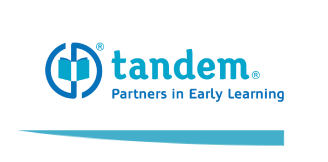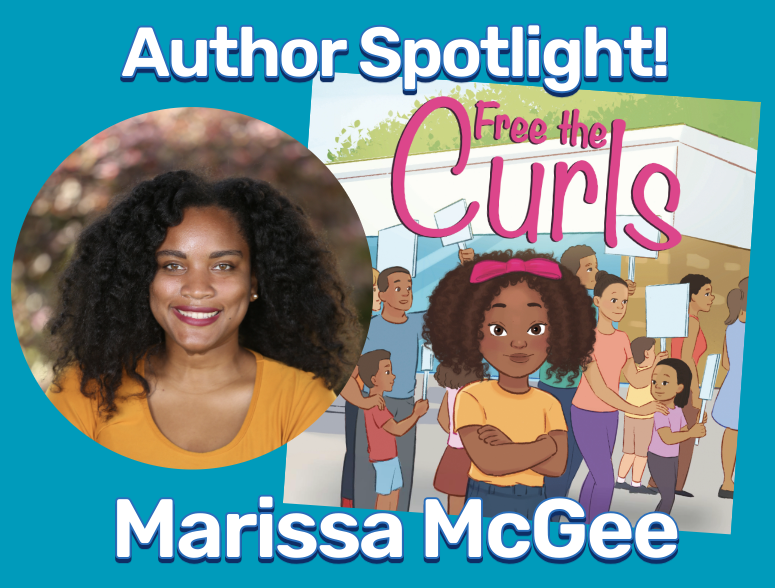
Marissa McGee is an anti-bias educator and the author of Free the Curls currently living in the East Bay. Marissa’s mission is to create books that serve as mirrors and windows for children. Statistics compiled by the Cooperative Children’s Book Center show that 14% of children’s books feature main characters who are Black. Less than 10% of stories that highlight Black characters are written by Black authors. With this own-voices story, Free the Curls aims to change that. This book features an inquisitive six-year-old girl named Maliyah and inspires children from all races to be changemakers in their community.
The interview below is the first of a two-part post sharing a recent conversation featuring McGee and Tandem’s Executive Director Savitha Moorthy.
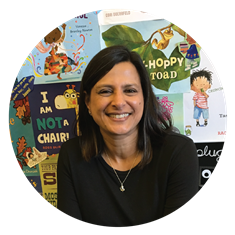
Savitha Moorthy
Executive Director, Tandem
Thank so much for joining me today to talk about Free the Curls, diverse books, and more. Let’s jump right in!
How did you become a picture book author?
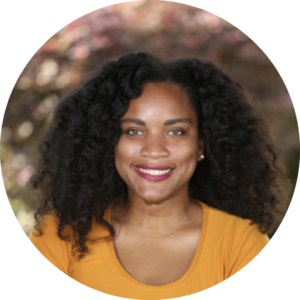
Marissa McGee
Author, "Free the Curls"
As a kid, I always wanted to be a writer. Then as I got older, it was something that sadly faded into the background. It was something that I didn’t pursue, until one day I went to the store to buy shampoo because I needed to wash my hair and all of the products that I needed were locked in a case. I was like, huh?
I inquired a bit, and wasn’t satisfied with the responses that I got. I went to a few other stores in the area and saw the same thing. As I was talking to a manager at one of the stores, he shared that those products get stolen a lot.
A Black woman and her daughter in the store, who was around seven or eight, shared that they saw the same thing. If I’m having this reaction as an adult, how is it impacting this child? That’s when I decided I needed to do something.
Savitha: I love that this was inspired by a true story. Why is it so important to have access to diverse books that share the experiences of our Black and Brown characters?
Marissa: I think back to my childhood about the books that I loved, and I can’t for the life of me think of a book where I felt that I was reflected in it. It is really disheartening when you stop and think about it.
Kids who don’t identify as Black are able to gather perspectives or get a glimpse into the experience of Maliyah in Free the Curls. I did a reading at a library and was honestly a little nervous because it was for a racially diverse group of children ages 5-12 with their families, and no educators in the room. I wondered if parents were going to ask why I’m reading this book and introducing these concepts to their child. Yet this experience was so beautiful because at the end of the story, one child raised her hand and said, “They’re not all the same color, but they can still help.” 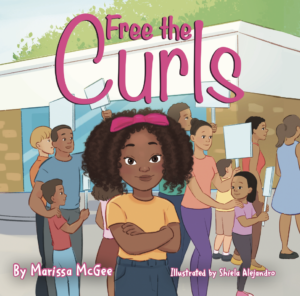
At that moment, the children recognized that what happened in the Free the Curls was unfair, and just because it doesn’t impact themselves or someone who looks like they do, that doesn’t mean people cannot help. Stories with diverse characters and experiences introduce these concepts to kids and they start to think about experiences from the perspective of someone else, which really helps to build empathy and flex that muscle.
Savitha: At Tandem, we explore how access to culturally and linguistically diverse books promotes engagement and intersects with opportunities for teaching foundational literacy and language development skills.
I read this book at my son’s elementary school to his kindergarten class for Black History Month. After the part of the book where Maliyah sees the shampoos in locked cases at one store after another, I said to the kids, you know, when something happens in more than one place and it happens over and over, grownups have a big word for it. You know what that word is? It’s called “systemic.” And so this book gave me an opportunity to teach five year olds the word systemic, and also put it in context.

The kids who were African-American could see themselves reflected in the book. For the kids who were not African American, this book was a chance to learn about somebody else. I got a chance to tell my story and talk about my son, who’s African American, and how my husband and I, who are not, have learned to care for his hair.
I was also teaching them vocabulary, a word like systemic, and putting it into context for them. And we were doing some phonemic awareness, and finding rhyming words like free and McGee. Can you talk a little bit about how sharing diverse books helps to promote literacy?
Marissa: With Free the Curls, I’ll often start by asking, “What’s wash day? Who’s heard of that?” A lot of times some kids will say, “Oh, it’s when you wash your house!” These children are using their context clues, I like it. And I would say, nine out of ten Black students who respond say, “Oh, it’s when you’re getting your hair washed.”
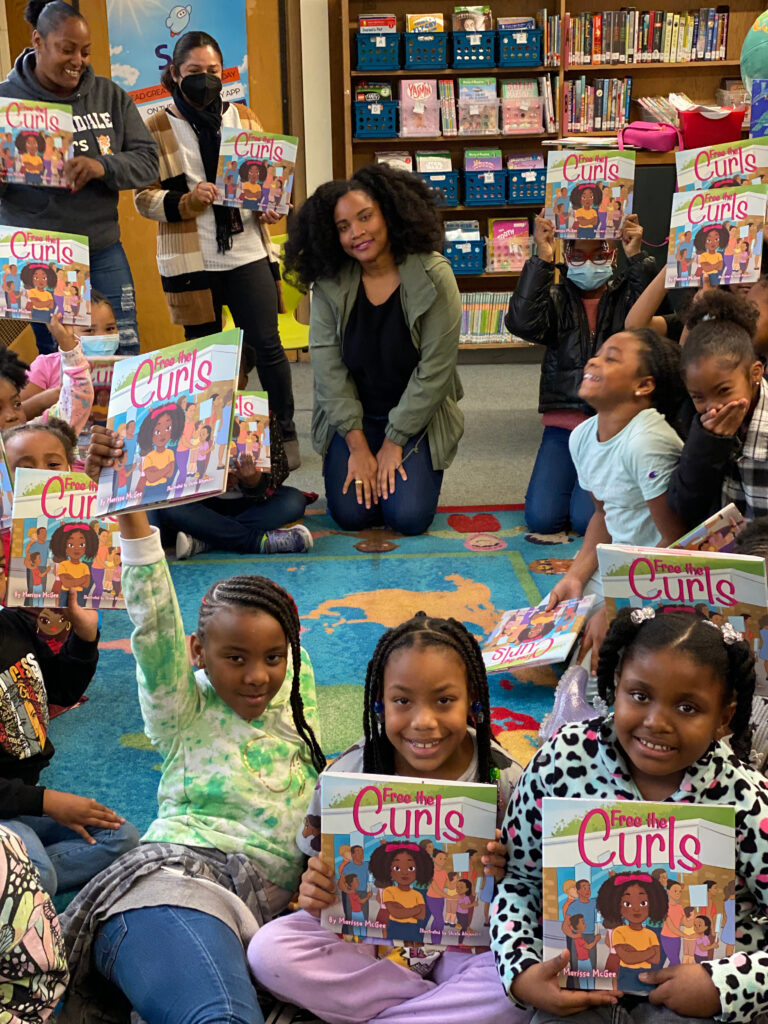 In this example, Black children in the read aloud don’t have to try to make meaning of wash day because it’s something they’ve experienced. Instead, they focus on decoding the words in this book to understand the message without having to do that extra work of understanding what the character is even talking about.
In this example, Black children in the read aloud don’t have to try to make meaning of wash day because it’s something they’ve experienced. Instead, they focus on decoding the words in this book to understand the message without having to do that extra work of understanding what the character is even talking about.
For those who have not experienced wash day, they need to stop and consider the meaning. It’s like double-tasking as an adult. I can’t multitask, I know I have to do one thing at a time to do it well. So when we think about when kids are reading, if they’re reading about something that doesn’t relate to them at all, they’re trying to make meaning of it while also decoding the words to understand what the book is about.
Savitha: One of the questions we get a lot from families is, “How do we read and talk about a book that reflects a culture that’s different from ours?”
Marissa: If you’re reading a book where the culture doesn’t reflect who you are, go on a journey to learn more. Model that curiosity. Go to the library and check out a cookbook from that culture. Find opportunities to learn more and immerse yourself in the culture and try different experiences. As adults, I feel like it’s our responsibility to respond to curiosity and really nurture it and engage in those conversations.
Savitha: When I was reading your book to my son’s kindergarten class, I was a little nervous about how the teacher might react. When I finished reading the book, I asked the class to tell me something that they noticed or liked from the book. The teacher was the first person to raise her hand. She said, “This book taught me something about a group of people that I didn’t know about.”
I thought that was really powerful for these five-year-olds to see their teacher model that kind of curiosity and interest in learning about communities that are different from hers. That’s when it brought home to me that the work that we do at Tandem, it’s centered on the children, but the family members and the educators are also taking away some important lessons from our work.
Visit our blog next month for Part 2 of this conversation, which features Savitha and Marissa discussing the impact of diverse stories like Free the Curls and how to talk about racial equity with young children. Follow Marissa McGee on Instagram: @FreetheCurlsFTC. Get copies of Free the Curls on Marissa’s website: https://freethecurlsftc.com/.
